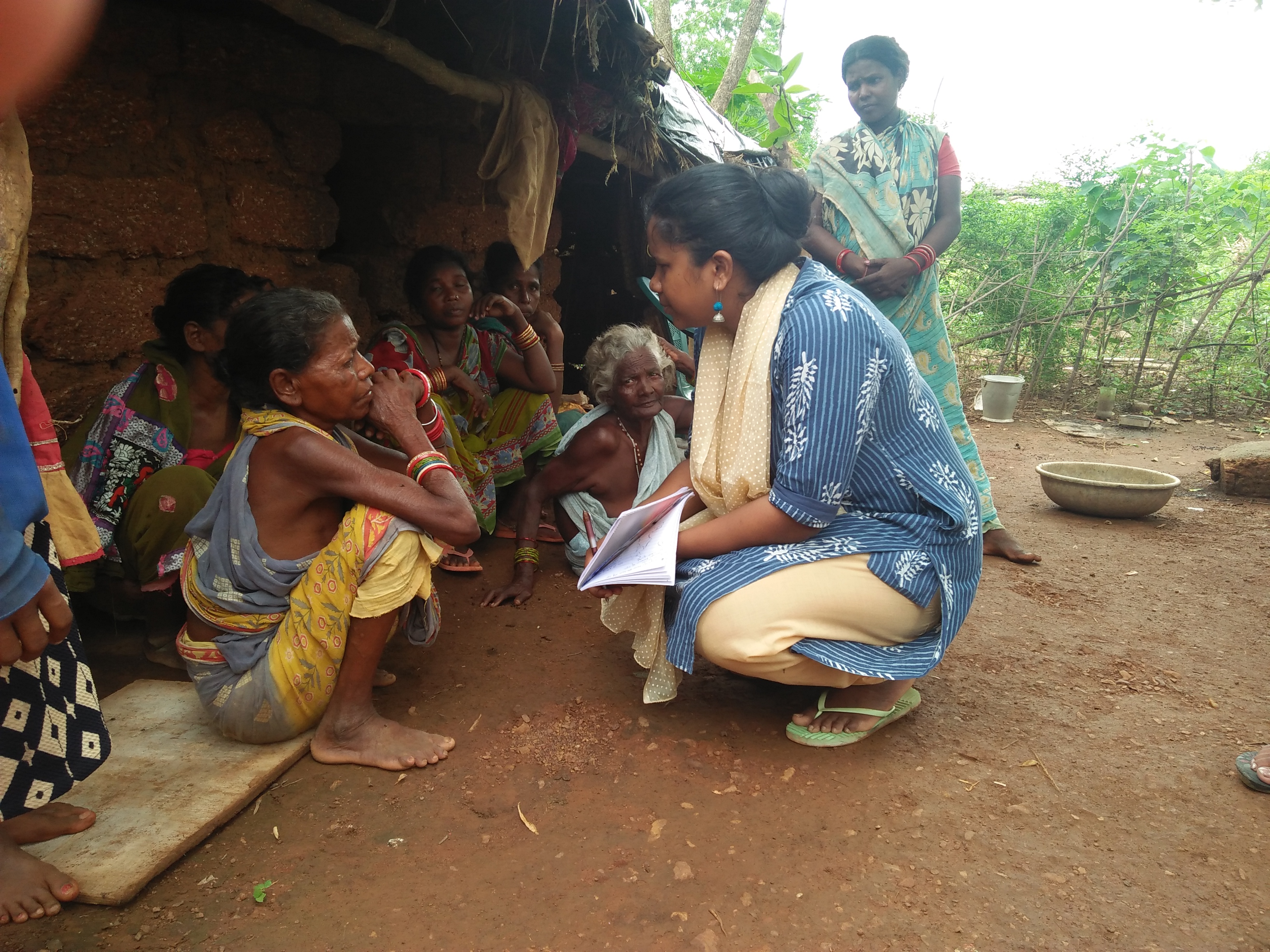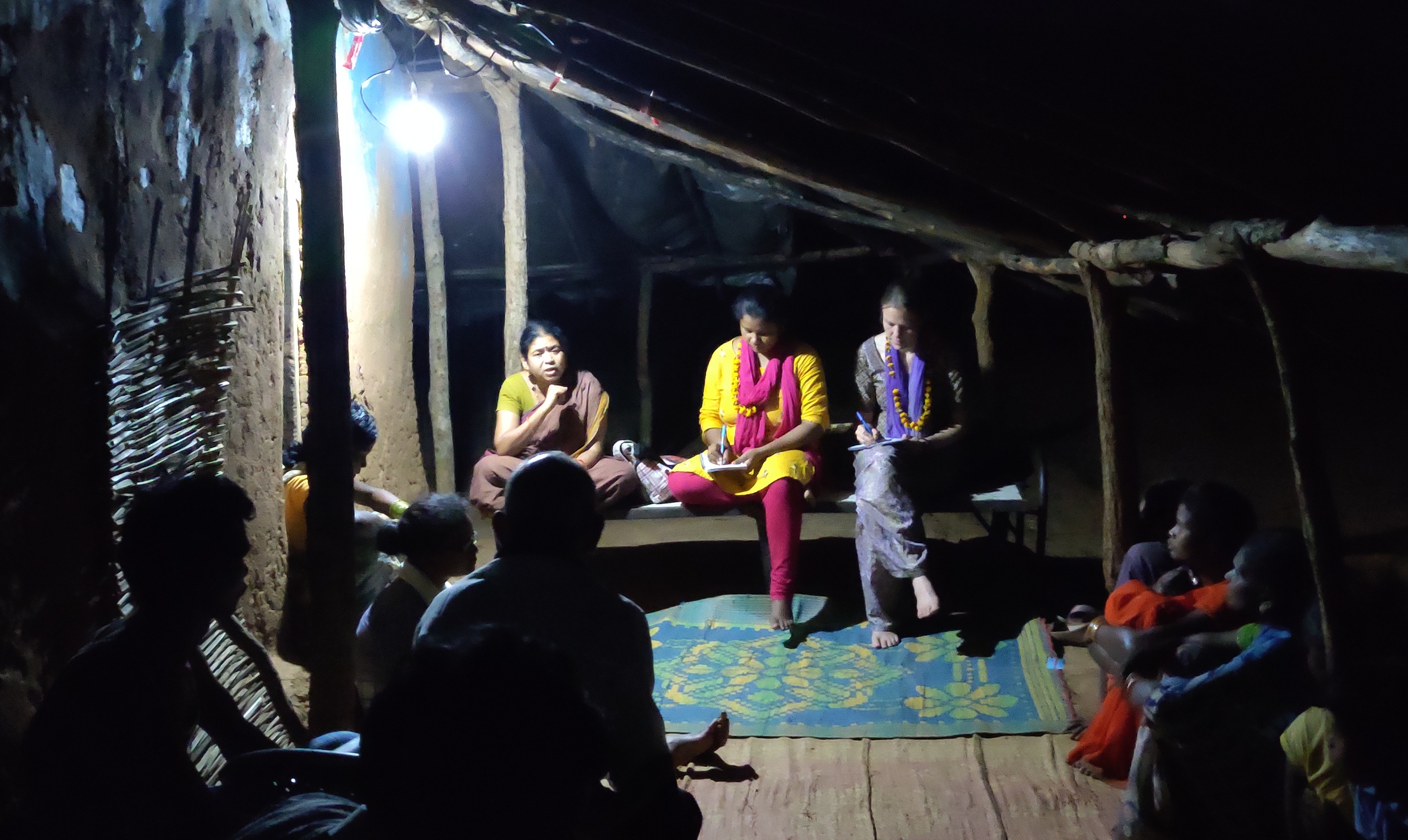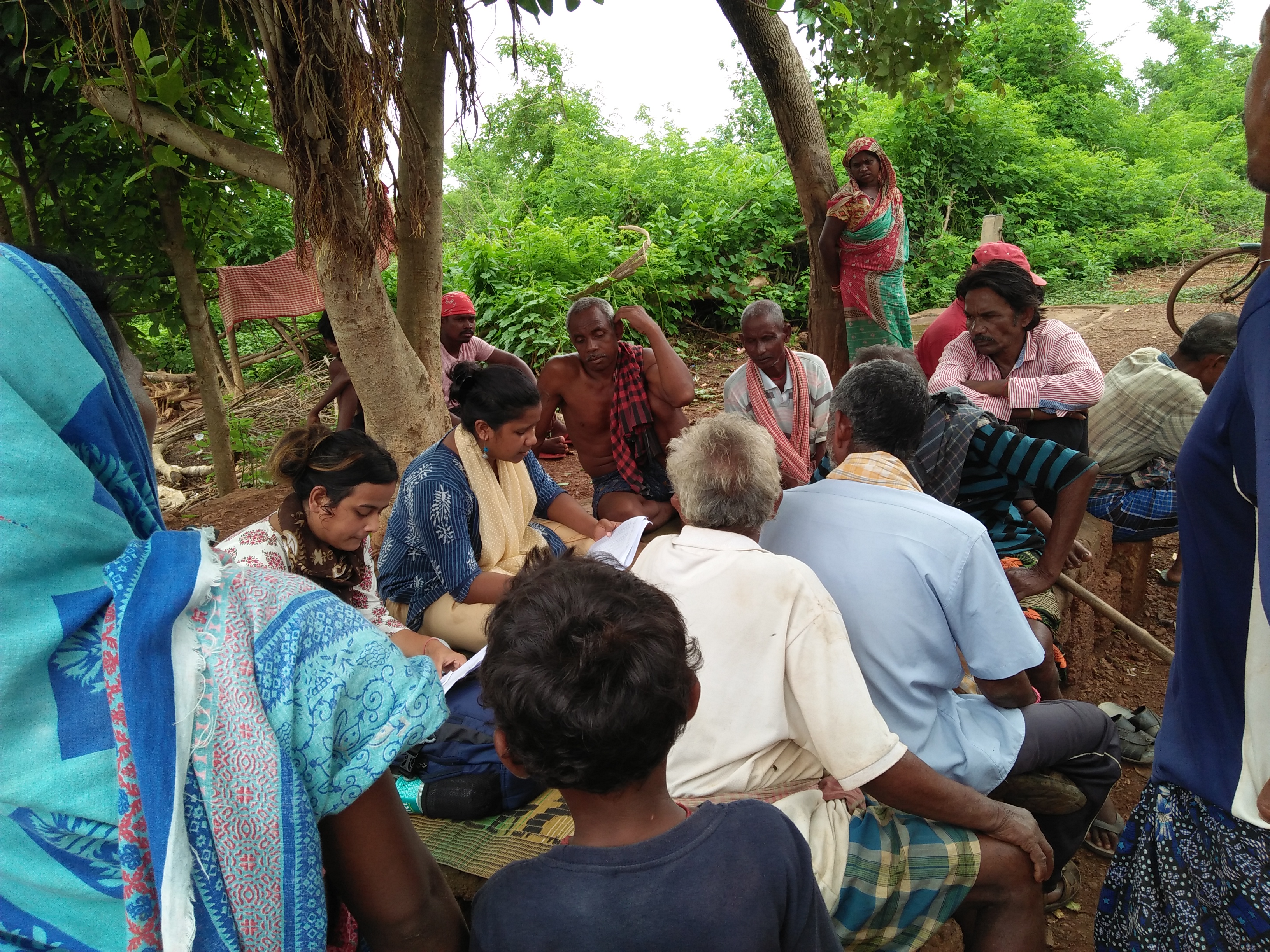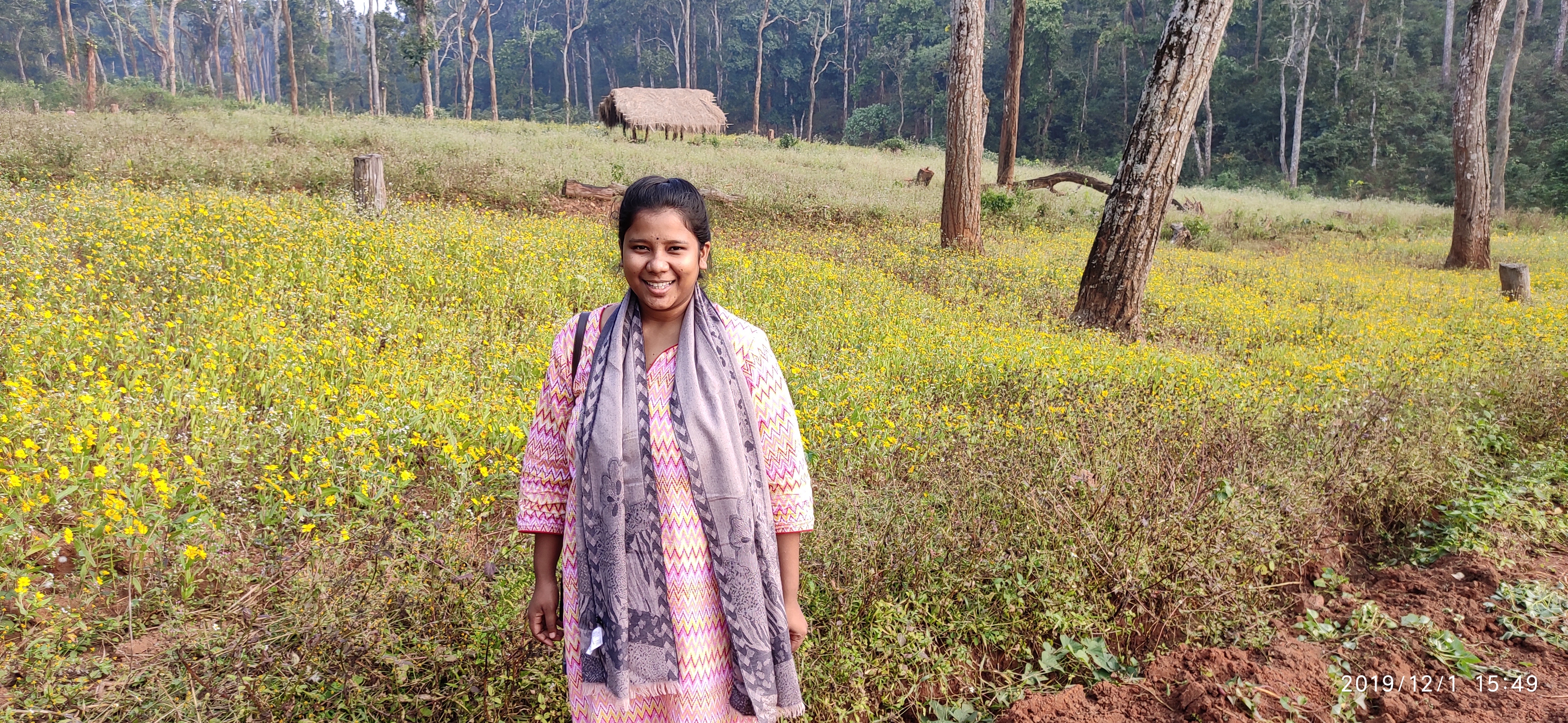It’s time to wake up. On Global Climate Day of Action, VICE Media Group is solely telling stories about our current climate crisis. Click here to meet young climate leaders from around the globe and learn how you can take action.
Back when Archana Soreng was in school, her teacher once asked everyone in the class to write an essay on themselves—an assignment most Indian kids have completed at some point in their lives. When Soreng went back home and asked her grandparents about the story of their family, she learned that her last name meant “rock”. The Indigenous Khadia tribe in the eastern Indian state of Odisha she belonged to, in fact, had several last names gleaned from the natural world. “Baa”, for example, meant “paddy” whereas the last name of “Kullu” meant “tortoise”. This was probably the first time that Soreng consciously realised how her fate was closely intertwined with nature.
“That realisation of myself and where I come from made me reflect on what my relationship with nature is,” the 24-year-old climate activist who works with policy advocacy Vasundhara, told VICE. Soreng is one of seven newly-selected members of the United Nations Secretary General’s Youth Advisory Group on Climate Change, and while her UN appointment has suddenly thrust her into the international limelight, the young activist has spent years trying to get Indigenous people a seat at India’s decision-making tables.

“During the churning of my journey towards this entire climate discourse, I lost my father,” she says, sadly. “That was a trigger and got me reflecting more on my journey and making me realise it is very important to document the traditional knowledge and practices because we never know when our elders will not be with us. They’re the ones who’ve always led eco-friendly lives, and we cannot lose the knowledge and information they have. These need to be documented because if my generation will not do this, upcoming generations will have nowhere else to get it from.”
VICE spoke with Soreng to hear more about her position that it’s Indigenous practices that will help to save us.
VICE: How are the lives and lifestyles of Indigenous people tied to the climate fight?
Archana Soreng: If we see the lifestyle of these communities, they are very eco-friendly, and they have the traditional knowledge and practices meant to protect the natural environment. They do not do that as a mode of doing it; it’s their very way of living. This means they’re already impacting the climate crisis for the better. Everyone has been talking about climate crisis and climate action. But what’s missed out in this entire narrative is the role of Indigenous people. It’s important to link these, and that’s what I want to emphasise.

How can we take this knowledge and make it actionable?
I strongly feel that policies are very much influenced by the literature or the narrative around the subject. At this particular point of time, there is a lack of literature, especially written one, specifically in the context of Asia, and in terms of Indigenous people’s contributions. So in terms of action, I am keen to ensure more documentation of this traditional knowledge for scientific value; encourage the youth to write about it; and also encourage this documentation in all possible languages, not just from India but globally.
The second thing which I very strongly believe is that there is a lack of space wherein people are able to speak their voices. I want to create more engaging spaces for the youth and for different stakeholders to come together and sit on a table to discuss and deliberate, so as to develop a mutual climate action strategy. Because now what is happening is that every stakeholder has their own perspective; the need is to bring these perspectives together. I want to push for a safer environment for the youth of all ethnicities to speak up and contribute towards climate action—especially the ones who are differently abled, those directly affected by the climate crisis or those who have good initiatives to combat the crisis.
When it comes to Indigenous traditions and actions that we can implement, can you give us examples of what that would look like?
As an example, take plastic pollution. When I look at my own family and village people, they only use sustainable alternatives of plastic. They are highly dependent on minor forest produce which can not just contribute towards large revenue generation for the government but also help the environment. My community, for example, uses plates made out of leaves, which are great alternatives to single-use plates. Now these can be found on some e-commerce stores but they’ve picked up in urban areas very minimally. We need a deliberate effort to, say, replace disposable plates in restaurants.
Even this plucking of leaves is done very sustainably. If this year they pluck leaves from the north area of the forest, the next year they’ll go south. They’re not draining any resources. Even the stitching of these plates uses natural bamboo. The best part is it’s biodegradable, and makes for good food for goats and sheep too. So, waste management just gets sorted. In fact, there is no concept of waste at all. Other examples include substituting plastic tanks with [earthen] pots or matkas; or carving our and drying a bottle gourd to make a water bottle—something I’ve seen my grandfather and uncles do.
But another concern is also the hijacking of these alternatives [by companies who want to profit]. That again is a concern.
What are the ways in which we can ensure more visibility of these efforts then?
I want to give the example of the “thengapalli” groups here. “Thenga” means stick and “pali” is rotation. This is a village forest protection committee in Odisha made up of village women who have fought off the timber mafia and led to the regeneration of the forest spread over 600 acres. It happened because the village men realised that the timber mafia won’t fight off the women the same way they fought off men, thanks to stringent laws against violence on women. How this works is women now patrol the forests on a rotational basis, making noises with the sticks they carry so as to scare off miscreants.
But at one point, the women realised that the men are just using them for precaution or prevention, without giving them decision making power. So they then got the courage to take that power from them—which is what led to forest cover coming back. But still, the rights of these women over the land and forest are not recognised. Securing these is important because non-recognition of their work makes them more vulnerable to eviction or land grabbing. That is why when we talk about climate action, it is very important that their rights are also inserted. It is only when that is done that we can ensure more biodiversity protection. That is one of my core agendas.
How can people who might be living in the cities contribute to this cause?
The first thing we need is empathy and respect for these communities. We need to respect the knowledge that is coming from the local communities and their contribution. They may be illiterate, but they do have immense knowledge. And when you have empathy and respect, you’ll also probably have the desire to know more about these communities. With this desire, you might reach out to networks connected to these communities. But even without that, the starting point of just information is important too. Because these are voices that need to be heard, and that’s all you have to do: Listen to them.
This interview has been edited for length and clarity.
Follow Dhvani on Instagram.
from VICE US https://ift.tt/30gPLxn
via cheap web hosting



No comments:
Post a Comment